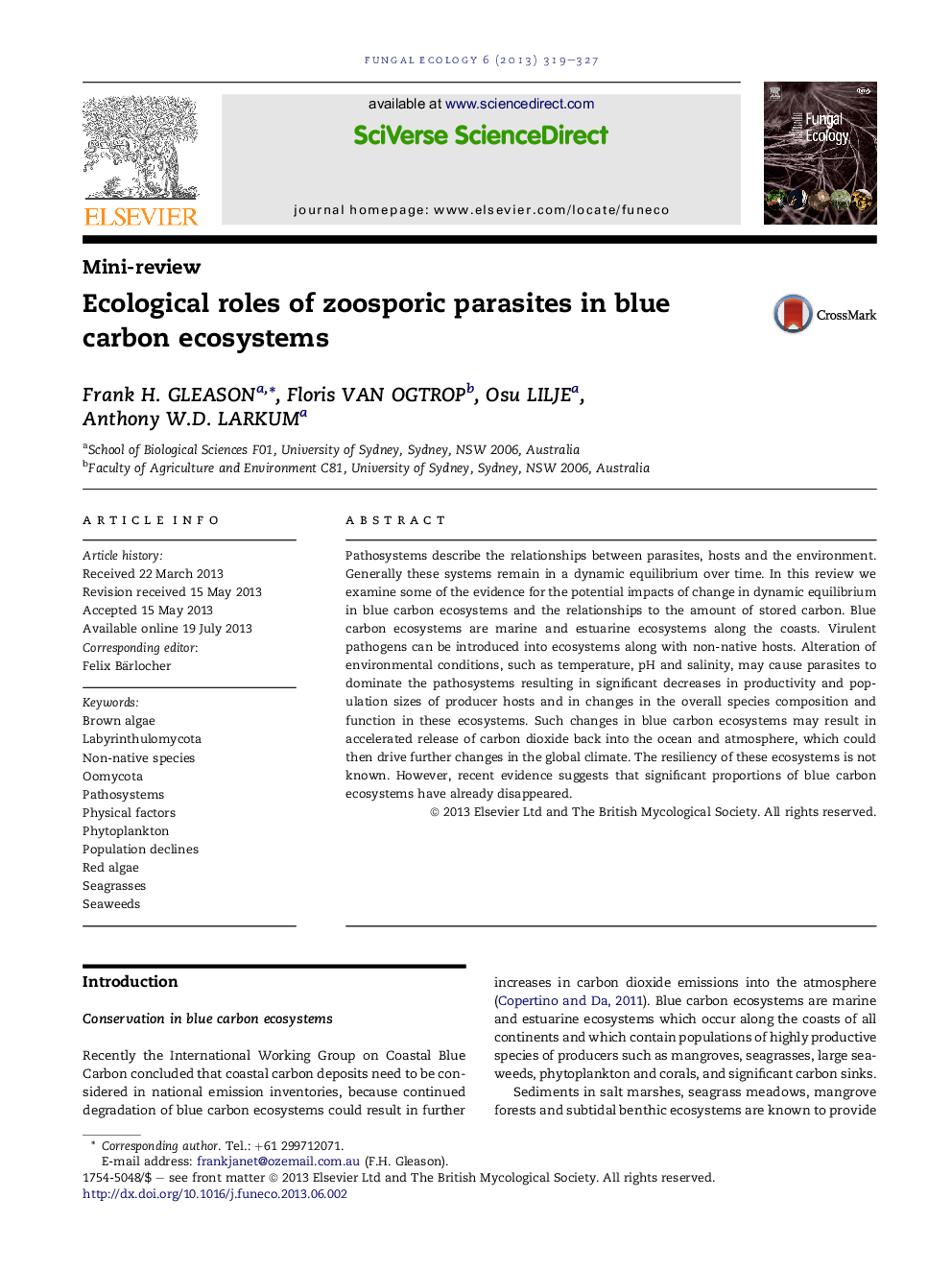| Article ID | Journal | Published Year | Pages | File Type |
|---|---|---|---|---|
| 10876843 | Fungal Ecology | 2013 | 9 Pages |
Abstract
Pathosystems describe the relationships between parasites, hosts and the environment. Generally these systems remain in a dynamic equilibrium over time. In this review we examine some of the evidence for the potential impacts of change in dynamic equilibrium in blue carbon ecosystems and the relationships to the amount of stored carbon. Blue carbon ecosystems are marine and estuarine ecosystems along the coasts. Virulent pathogens can be introduced into ecosystems along with non-native hosts. Alteration of environmental conditions, such as temperature, pH and salinity, may cause parasites to dominate the pathosystems resulting in significant decreases in productivity and population sizes of producer hosts and in changes in the overall species composition and function in these ecosystems. Such changes in blue carbon ecosystems may result in accelerated release of carbon dioxide back into the ocean and atmosphere, which could then drive further changes in the global climate. The resiliency of these ecosystems is not known. However, recent evidence suggests that significant proportions of blue carbon ecosystems have already disappeared.
Keywords
Related Topics
Life Sciences
Agricultural and Biological Sciences
Ecology, Evolution, Behavior and Systematics
Authors
Frank H. Gleason, Floris van Ogtrop, Osu Lilje, Anthony W.D. Larkum,
